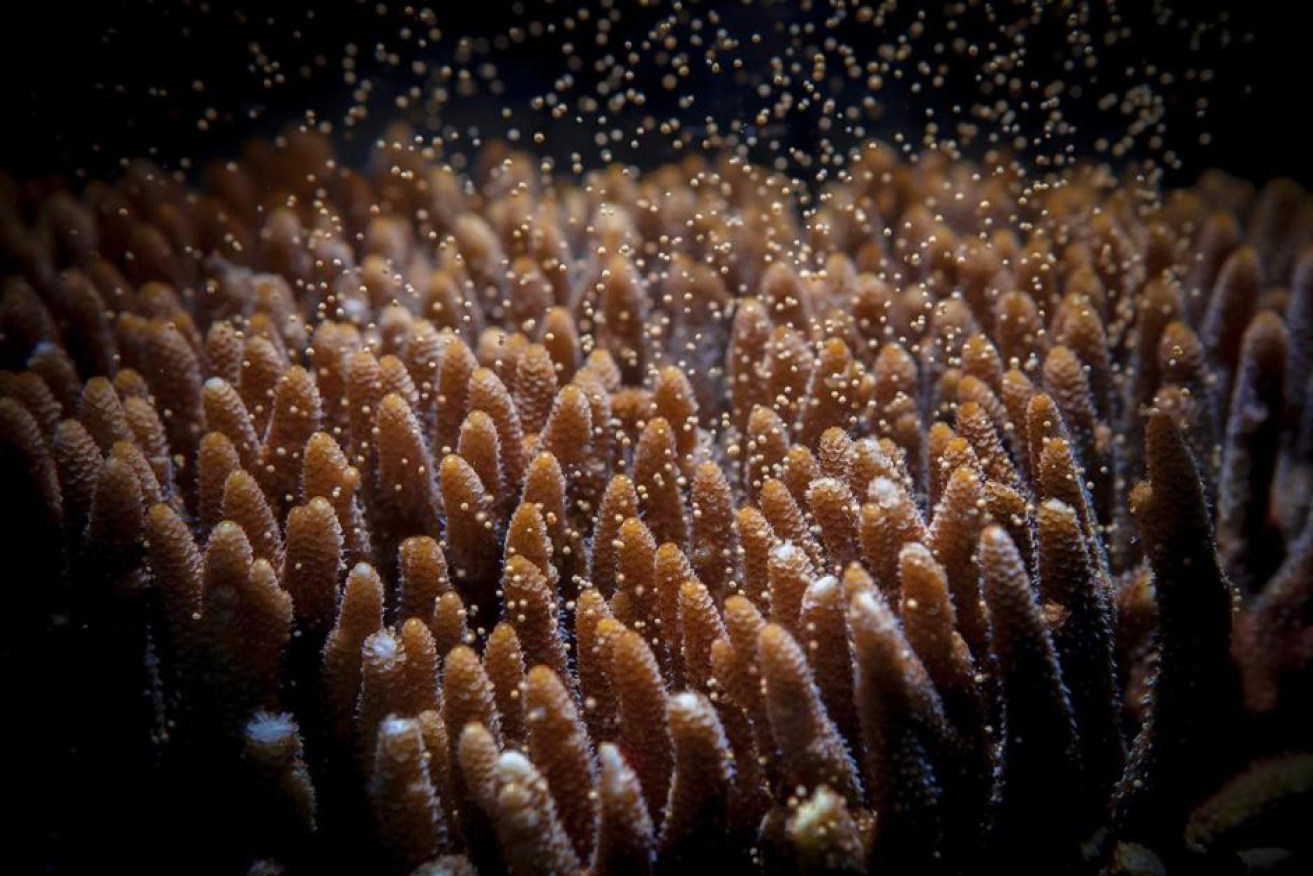Dubbo sperm bank could help safeguard the future of the Great Barrier Reef

The Great Barrier Reef has gotten freaky for the second time in a month. Photo: Mikaela Nordborg
They are not the specimens you would expect to see at Taronga’s Western Plains Zoo in Dubbo, but almost 2,000 kilometres south-west of the Great Barrier Reef, a bank containing billions of cryogenically frozen coral sperm samples has been growing.
The collection is the largest in the world.
The program has been running for a few years but this year, for the first time, collected samples off the Southern Great Barrier Reef from Heron Island.
Australian Institute of Marine Science (AIMS) sea simulator manager Craig Humphrey said there was a whole bunch of genetic differences between individuals and species.
“So we need to ensure we can preserve enough of that genetic material that we can put back into the population if required,” he said.
The samples were flown from north Queensland to the state’s central-west in a dry shipper, which keeps the sperm at minus 150 degrees Celsius.
They are then stored in containers with liquid nitrogen at nearly minus 200C.

Coral spawn samples ready to be transported to Dubbo. Photo: Queensland Museum
Taronga reproductive biologist Dr Rebecca Hobbs said researchers were “trying to identify corals that might be more heat tolerant or have other genetic benefits to help their survivability”.
Mr Humphrey said 15 different coral species had already been sourced, but with several hundred calling the Great Barrier Reef home, the task of preserving them all is mammoth.
While the research had already proven it was possible to use frozen sperm to fertilize eggs, the next stage would now focus on how to grow the baby corals, and assessing an appropriate time to put them on the reef.
See coral spawning below:
“We can scale that up so we can get several tens of thousands of coral babies,” Dr Hobbs said.
She said the bank was crucial for both science and conservation.
“We’re hoping that this will be something that will be embraced and we will get more opportunities to collect healthy materials, because these are samples that can remain under liquid nitrogen for decades so that will be an important genetic resource into the future,” Dr Hobbs said.
The project is just one of about 20 AIMS is currently involved with, focusing on reef restoration and conservation.
Back-to-back bleaching events have prompted scientists working within the sector to think outside the box to address reef management.
But Mr Humphrey said while this project was an insurance policy of sorts for the future of the reef, the primary focus must continue to centre on climate change.
“Without action on climate change, a lot of the work we do may be in vain,” he said.
“If the temperature keeps climbing — corals have a very narrow thermal tolerance — we will see more bleaching events into the future.”
– ABC








